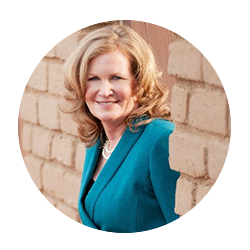
When serving the needs of a large school district, university, or community college system, procurement teams are required to maintain a level of knowledge on a variety of topics. When it comes to green purchasing or sustainability, it can get complicated very quickly.
With thousands of students, visitors, and employees in multiple buildings, universities and school districts are small ecosystems and have a direct impact on the environment through energy and water use, waste, and greenhouse gas emissions.
So, how does procurement keep up? Selecting a cooperative contract with a responsible manufacturer is one way. Companies are very aware of proposed or pending legislation affecting their industry, so they make the necessary changes to their product lines or services. Since a national contract is generally less prescriptive, it can adapt more easily to legislative changes to avoid a re-bid process. Cooperative contracts have greater variety and flexibility in product lines to reflect any updated requirements.
Easier decisions can be made for those environmental goals that most people are aware of, such as purchasing paper made with recycled or certified content and remanufactured printer cartridges. However, as situations get more complex, more progressive companies are providing recommendations and comprehensive solutions that help save resources, improve energy efficiency, and promote the use of safer chemicals. Staples, through its E&I cooperative contracts for office and janitorial supplies, commits to providing this type of detailed engagement for any client who makes this a priority.
Small purchasing decisions can have a huge impact. For example, opting for reusable or compostable plates, cups and cutlery in the school cafeteria, using safer cleaning supplies by seeking certified cleaners or reviewing the material safety data sheets (MSDS), and purchasing a higher volume of energy efficient products as part of your technology market basket.
Boston University’s (BU) climate action plan aims to reduce carbon emissions on its campuses to zero by 2040, an ambitious goal that includes their cleaning program. Having earned high marks from the Association for the Advancement of Sustainability in Higher Education (AASHE), some of BU’s efforts that can be adopted by other institutions include:
Procurement may be asked to help support a broader strategic plan, such as energy management. A multi-year effort often covers a range of buildings across several campuses, extending beyond a simplified commodity purchase. Lighting retrofits for greater energy-efficient lighting and expertise in securing federal, state, and local incentives, may requires consultative services.
How can any typical buyer know about the energy efficiency of every type of lightbulb – including halogen, linear fluorescent, and LED bulbs? Relying on your vendors as partners in education is key. When approaching a more complicated project, there may be value-added services to encompass the additional needs of a successful environmental project.
For example, Grainger may be the awarded vendor for supplying your maintenance, repair and operational (MRO) supplies. Through a cooperative contract, they may also offer energy audit/consultation services, economic analysis on those recommendations, project management, rebate administration, recycling resources and even project financing (if applicable). By taking advantage of these value-added consulting services, procurement can help save energy and reduce monthly electric bills.
Thus, the role of procurement is taken from a simple transactional mode to one of strategic planning to ultimately reduce energy costs for the institution.

Looking beyond your own school district or university system, a goal may be to contract with companies who are good stewards and take an active role in reducing their own environmental footprint. This factor might be important in the overall evaluation rating scale and can be a component as to why one company may rank higher over another, with pricing and other key factors being the same. As such, many companies are concentrating efforts and resources toward this mission to ultimately benefit all communities.
Steelcase, one of the world’s leading manufacturers of office furniture, has established a strong commitment to responsible corporate practice and international sustainability efforts, which extends well beyond any specific contract.
In 2018, Steelcase partnered with Home Depot and Dekalb Office (an authorized Steelcase dealer) to divert furniture from landfills through reuse, recycling, and charitable donation programs. The result?
These 290 tons are equivalent to 322,222 of the iconic Home Depot five-gallon buckets.
In another project, Steelcase partnered with Public Thread, an organization that designs and makes small batches of sewn products from repurposed and upcycled textiles, giving the fabric new life and creating new opportunities for employees. In the first nine months of their partnership, Steelcase donated 1,000 pounds of unusable scrap fabric to Public Thread. Since establishing a baseline in 2010, Steelcase has reduced:
Steelcase has received several recognitions, including a top 30 position as one of the largest 100% Green Power Users in the United States, according to the Environmental Protection Agency’s (EPA) Green Power Partnership.
When finalizing your decision on a contract award, these types of credentials and achievements might be a “bragging” point in the final report, supporting a greater mission than just the immediate needs of your organization.

Tammy Rimes, MPA is is an author, keynote speaker, and procurement consultant, who served as a former Purchasing Agent for the City of San Diego. She is the current Executive Director for the National Cooperative Procurement Partners Association.